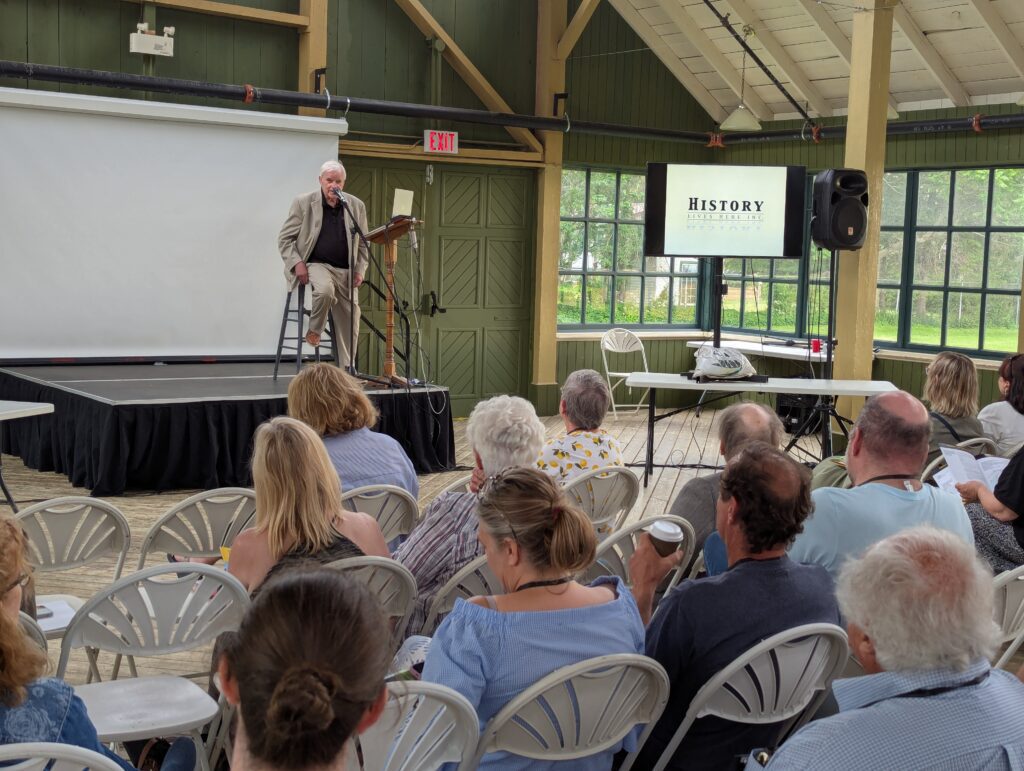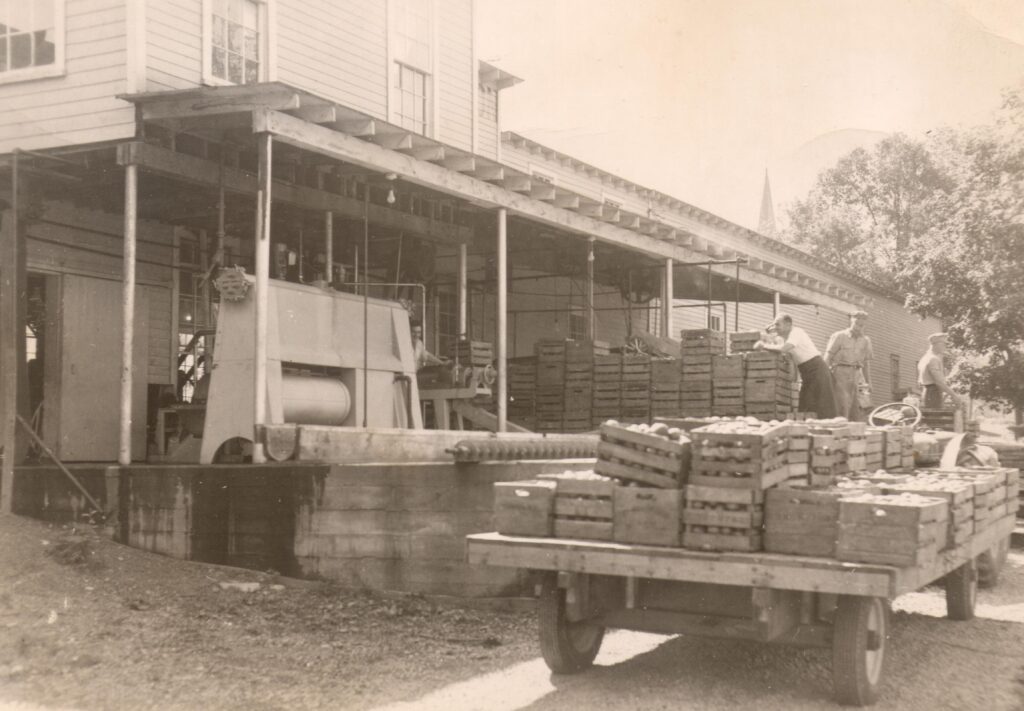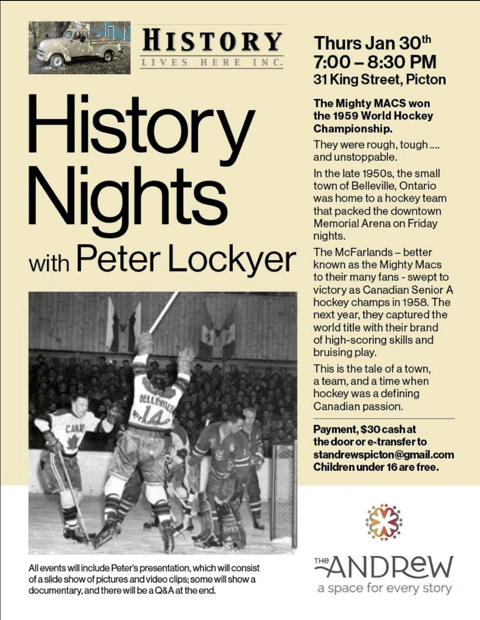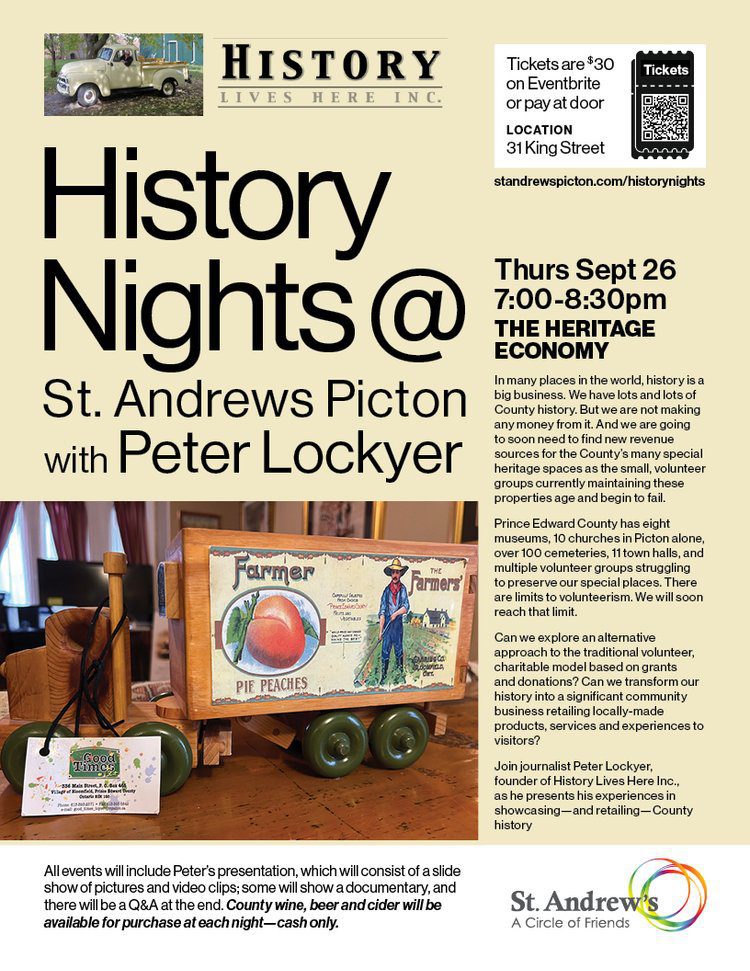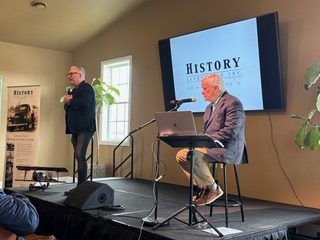The annual Community Heritage Ontario conference took place in Prince Edward County June 19-21, 2025.
The event brings together heritage organizations, advocates, municipal planners, architectural firms, and restoration experts to share ideas and experiences.
The opening night presentations were held in Picton’s iconic Crystal Palace constructed in the 1890s, a historic building which narrowly escaped demolition a century later. Saved by the herculean efforts of a small group of determined volunteers raising awareness of its unique importance as a community heritage asset, today this handsome building is a restoration success story, booked steadily as a site for weddings, festivals and community events.
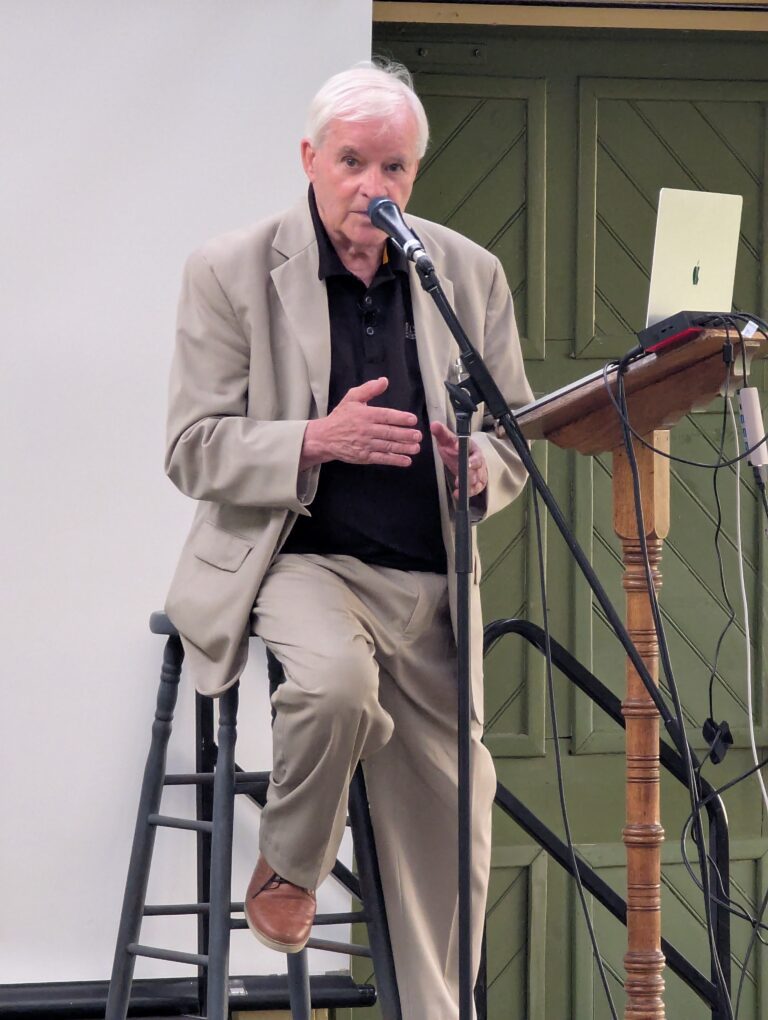
History Lives Here Inc. was invited to be the opening night presentation. Company president, Peter Lockyer, spoke of his experiences working within the heritage sector in his hometown over the past 25 years through public education initiatives to awaken the community to the history that is all around us – transforming “hidden history” into a suite of “popular history” products such as walking tours, re-enactments of historic events like an 1884 murder trial, to radio and television features showcasing local history. Lockyer’s key message is that we need to make history and heritage matter. And they will matter most if they become significant economic drivers within communities …as they are all over the world.
There is an imperative, says Lockyer, to make heritage a community business enterprise as older volunteers retire from volunteering and the many special spaces they support face uncertain futures, and as there are increasing development pressures threatened historic buildings and heritage landscapes.

